Our specialized cervical spine hernia treatment combines advanced surgical techniques with personalized care to help you regain your quality of life. With expert neurosurgeons and state-of-the-art facilities in Mexico, we provide a seamless experience from diagnosis to recovery. Let us guide you on your journey to a pain-free future.
Based on +500 Reviews
Cervical spine hernia occurs when the discs in the neck region of the spine become damaged or displaced, pressing on nearby nerves. This condition often leads to pain, numbness, or weakness in the neck, shoulders, arms, or hands. Common causes include aging, injuries, or repetitive strain. Left untreated, it can severely impact mobility and quality of life.
At Spine Travel, we specialize in diagnosing and treating cervical spine hernias to restore your health and well-being.
Symptoms of a cervical spine hernia depend on the location of the displaced disc. It can compress a nerve root or migrate toward the spinal cord, leading to pain, numbness, or weakness in the neck, shoulders, arms, or hands. In rare cases, the disc can migrate into the esophagus, causing difficulty when swallowing.
A study by Henderson C.M. and collaborators found that the most common symptoms include neck pain in 99.4% of patients, decreased sensation in the arms in 85.2%, decreased reflexes in 71.2%, and motor deficits in 68%. Additionally, 52% of patients experienced pain in the back, while less frequently, headaches occurred in 9.7% of patients and cervical angina (pain radiating to the chest) was reported in 1.3%.

As we age, the discs in the cervical spine naturally degenerate and lose moisture, making them less flexible. This process can cause the discs to crack or bulge, leading to herniation.

Accidents or falls, especially those involving whiplash or direct impact to the neck, can lead to a cervical spine hernia. The sudden force can push the disc out of its normal position.

Repetitive movements or poor posture, such as long hours spent at a desk or using a smartphone, can stress the cervical spine. This strain weakens the discs over time, increasing the risk of herniation.

Some individuals may inherit a genetic predisposition to disc degeneration or weakness in the spine. A family history of cervical spine hernias can increase the likelihood of developing the condition.

Excess body weight puts added pressure on the spine, especially in the cervical region. Over time, this can cause the discs to bulge or rupture, leading to a hernia.
Experience world-class care at an affordable price with Spine Travel. Our renowned hospitals and expert neurosurgeons provide top-quality cervical spine hernia surgery in Mexico. We manage your entire journey from consultation to recovery, ensuring a smooth and comfortable experience. Take the first step towards a pain-free life with our trusted services and comprehensive care.
We partner with state-of-the-art hospitals in Mexico equipped with advanced technology and facilities designed for optimal patient care and safety.
Our team includes highly skilled neurosurgeons with years of experience specializing in lumbar disc hernia surgeries, ensuring precision and successful outcomes.
Receive world-class surgical care at a fraction of the cost compared to the U.S., with transparent pricing and no compromise on quality.

Book your consultation, either in person or via Zoom, to discuss your symptoms and medical history.

Our specialists will evaluate your condition and provide a personalized diagnosis and surgical planning if needed.

We handle all your travel needs, including visas, airport pick-ups, and accommodations, ensuring a seamless and stress-free journey.

Undergo your surgery with our expert neurosurgeons, followed by dedicated care for a smooth recovery.
Take a quick test to understand your possible condition and explore treatment options available to you.
At Spine Travel, we understand that a cervical spine hernia can be a concerning condition. To help you make informed decisions about your health, we’ve compiled answers to some of the most common questions about cervical spine hernias and their treatment options. Whether you’re considering surgery or simply learning about the condition, these FAQs will guide you through the process, symptoms, causes, and treatment choices. If you have any additional questions or need personalized advice, our team of experts is here to assist you every step of the way.
Cervical disc herniation is more common than you might think. Approximately 90% of people will experience a herniated disc in their lifetime, but many will not have symptoms. Of those, about 1 in 10 will have a cervical disc herniation, while the rest will experience a lumbar disc herniation. This condition contributes to 25% of global work-related disabilities, causing an annual loss of 1,400 workdays per 1,000 workers. A study by Rochester et al. found an incidence of 18.6 per 100,000 people diagnosed with cervical disc herniation, with a higher prevalence in men during their 60s.
Not necessarily. While neck pain is common, with 4 out of 5 people experiencing it at some point, it doesn't automatically indicate a cervical disc herniation. Most neck pain resolves with painkillers and physical therapy. However, it's important to recognize the "red flags" of serious issues to ensure prompt medical attention.
Warning signs include persistent pain in the arms or hands, cramping sensations, muscle weakness, altered sensation, or reduced muscle volume without a clear cause. Gait instability can also be an indicator. If you experience any of these symptoms, it's essential to consult with a specialist for further evaluation.
No, not everyone with a herniated cervical disc has symptoms. Studies show that 19% to 45% of people with cervical disc herniation may not show any symptoms at all, meaning some people are fortunate not to experience pain or discomfort.
Not always. There is little correlation between imaging results and symptoms. Having a herniated disc diagnosed doesn’t mean you need surgery. In fact, up to 60% of patients who don’t undergo surgery experience spontaneous symptom relief. However, proper clinical follow-up with your specialist is essential to monitor your condition.
The diagnosis of a cervical herniated disc begins with a thorough physical examination and patient history. Your doctor will assess when symptoms started, potential causes, and factors that worsen or alleviate pain. Neurological exams, including tests for strength, sensitivity, and reflexes, are then conducted. If a hernia is suspected, imaging tests like a cervical MRI, X-rays (anteroposterior and lateral views), and sometimes dynamic X-rays may be ordered. In some cases, neuroconduction tests like electromyography or somatosensory evoked potentials may be needed for further assessment.
It is generally not recommended to have tests before your first consultation. Tests, such as MRIs, X-rays, or CT scans, are typically ordered by the specialist after the initial examination, based on your symptoms and clinical evaluation. The most common tests include MRI, anteroposterior and lateral X-rays, CT scans, and electromyography.
Treatment options depend on the severity of the herniation and symptoms. Conservative treatments such as rehabilitation, pain management, and lifestyle modifications are effective for about 90% of patients. In cases where symptoms persist or worsen, surgery may be recommended. The most common surgical procedure is anterior cervical discectomy with the placement of an interbody cage (PEEK or titanium), although it’s not always required.
Surgery is typically considered when conservative treatments (such as physical therapy and medication) fail to relieve symptoms after 6 to 12 weeks. If imaging studies confirm a cervical herniated disc and motor function deficits become significant or debilitating, surgery may be recommended to speed up recovery. The final decision should be made in consultation with your spine surgeon, considering the risks and benefits of all options.
Cervical disc herniation surgeries generally have high success rates and few complications. Most patients experience partial or complete symptom relief right after surgery. Minimally invasive techniques allow for reduced blood loss, and most patients are discharged within 24 hours. A cervical collar may be required for up to 4 weeks, and recovery time is typically 30 days or less. The most common procedure is a discectomy (removal of the affected disc) with the placement of an interbody cage, and 9 out of 10 patients report significant pain relief. Other procedures may be considered depending on the specifics of your condition.
Overall Rating 4.9 / 1463 reviews




Payment can be made at your arrival.